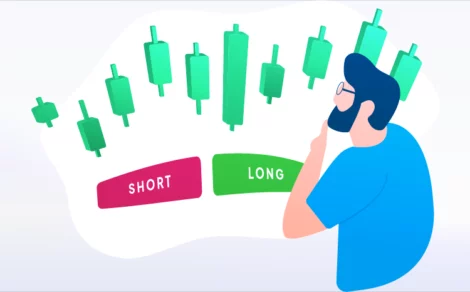Effective journals maintain consistency, honesty, and detail. They include both quantitative data (prices, sizes, and P&L) and qualitative factors (emotions and reasoning). Unsuccessful journals often lack regular entries, omit psychological factors, or focus exclusively on winning trades while ignoring valuable lessons from losses.
Toruscope » Online Trading » How To Create a Trading Journal?
In the complex world of financial markets, consistent success requires more than intuition or luck. Top traders know that systematically tracking your trading through proper documentation makes the difference between amateur and professional results.
Understanding how to create a trading journal can help refine your approach to the markets and avoid common mistakes that cause many to lose money. Read on to learn more.
What Is a Trading Journal?
A trading journal serves as your personal trading history book where you document every aspect of your trading activity. It is like a financial diary that captures your trades along with your thoughts, market conditions, and emotional state during each decision.
Unlike casual notes, a well-structured journal contains systematic records of:
- Entry and exit points for each position
- Market conditions at the time of trading
- Your reasoning behind each trade entry
- Emotional states that might have influenced your choices
- Performance outcomes and lessons learned
This organised approach to record trade details helps you identify patterns that might otherwise remain invisible in the chaos of day-to-day trading.
Key Advantages of Trading Journal Documentation
The benefits of maintaining a trading journal extend far beyond simple record-keeping. Here is why disciplined journaling transforms outcomes:
Pattern Recognition and Strategy Refinement
When you document dozens or hundreds of trades, patterns emerge that reveal the strengths and weaknesses of your trading strategy. A properly maintained journal might reveal useful insights. Here are a few examples:
- Your win rate with momentum trades exceeds the desired levels while mean-reversion trades barely break even.
- Trades placed in the morning hours outperform afternoon positions.
- Your average winning trade lasts for a few days, while losing trades average a couple of weeks.
These insights allow for strategy refinement based on actual data rather than gut feelings.
Emotional Management and Discipline
Markets can trigger powerful emotions that cloud judgment. By documenting your emotional state alongside trade details, you create awareness of how psychology affects your decisions. Many traders discover they:
- Exit winning trades too early due to fear.
- Hold losing positions for extended durations in the hope of recovery.
- Increase position sizes after winning streaks, often before reversals.
- Abandon their stop loss and take profit levels when under stress.
The journal provides emotional distance and objectivity, helping implement better discipline.
Performance Measurement
Without proper documentation, traders often misremember their performance. The journal provides accurate metrics on trading performance, including:
- Win-to-loss ratios across different market conditions.
- Average profit per trade versus average loss.
- Monthly and quarterly performance trends.
- Risk-adjusted returns rather than raw profits.
Practical Steps To Create Your Trading Journal
Creating an effective trading journal requires capturing specific information with each journal entry. Here is how to build your system:
Choose Your Journal Format
You can create a trading journal in different formats:
- Digital Spreadsheets: Excel or Google Sheets allow easy sorting, filtering, and automatic calculations.
- Specialised Software: Applications that integrate with trading platforms for automatic trade importing.
- Paper Journals: Physical notebooks can create psychological distance and encourage deeper reflection.
Select the method that matches your personal preferences and workflow.
Essential Elements To Include
For each position, always record:
- Date and time of entry and exit
- Security name and ticker symbol
- Entry and exit prices with position size
- The specific setup that triggered your entry
- Your pre-trade analysis and expectations
- Stop loss and take profit levels set before entry
- Actual outcome and profit/loss
Develop Analysis Categories
Beyond basic trade data, create sections for:
- Market Context: Index levels, sector performance, and relevant news.
- Strategy Analysis: The specific pattern or setup you followed.
- Psychological Notes: Your emotional state and confidence level.
- Post-Trade Review: What worked, what didn’t, and lessons learned.
Establish a Consistent Routine
The most effective journals become part of your daily habit:
- Set aside 15-30 minutes daily for entries.
- Review weekly to identify immediate patterns.
- Conduct monthly analysis for broader trends.
- Update your risk management approach based on insights.
Why Trading Journals Are Critical for Success?
While the benefits section covered what journals can do for you, here is why they are absolutely essential for serious traders:
- Accountability and Honesty: A journal forces you to confront the reality of your trading decisions without the cognitive biases that naturally affect memory. This accountability eliminates the tendency to remember winners while forgetting losers.
- Skill Development Acceleration: Studies across disciplines show that deliberate practice with feedback accelerates skill development. Your journal provides structured feedback on each decision, compressing the learning curve significantly.
- Professional Approach to Markets: Forex trading professionals and institutional traders universally use detailed documentation systems. Adopting similar practices elevates your approach from casual speculation to professional trading.
- Protection Against Market Randomness: Markets contain significant random elements that can reward poor decisions and punish good ones in the short term. Journals help distinguish between process quality and outcome luck, maintaining focus on long-term edge.
Final Thoughts
Consistent journaling transforms random market participation into a structured learning process. Your journal becomes both your teacher and accountability partner on the path to trading mastery.
Remember that the most valuable journal is the one you will actually use consistently. Start simple, focus on critical elements, and allow your process to evolve in tandem with your trading expertise.
Ready to put your journal insights into action? Visit Torus Digital, a comprehensive trading platform that provides all the tools you need to execute your strategies in the Indian markets with our Trading account app.
Frequently Asked Questions
Most successful traders allocate 15-30 minutes daily for basic entry documentation and 1-2 hours weekly for deeper analysis. The time investment typically decreases as journaling becomes habitual, while the insights gained increase as the data set grows larger over time.
While automated tools can capture trade data efficiently, they often miss crucial qualitative elements like emotional states and decision rationales. The most effective approach combines automated data capture for efficiency with manual reflection for psychological insights.
Related Reads
What is Slippage in Trading? Meaning, Causes & Impact Explained
In trading, timing and precision often define success. However, even when a trader believes...
By: torus
- 7 mins
- 01.Jul.2025
- 4(1)
- 96
What is an Option Contract?
Imagine having the flexibility to buy or sell shares at a fixed price, no...
By: torus
- 7 mins
- 01.Jul.2025
- 0(0)
- 43
Types of Financial Instruments You Should Know Before Investing
Before investing funds in any market, it is essential to understand what financial instruments...
By: torus
- 7 mins
- 01.Jul.2025
- 0(0)
- 39
What are Contracts for Difference (CFD)?
Contracts for Difference, commonly known as CFDs, are financial instruments that allow traders to...
By: torus
- 9 mins
- 01.Jul.2025
- 0(0)
- 39
Difference between Short Position & Long Position
Understanding the concepts of short and long positions is essential for anyone interested in...
By: torus
- 8 mins
- 01.Jul.2025
- 0(0)
- 38
Essential Trading Terminologies You Need to Know
Trading in financial markets opens a world full of opportunities. For many first-time investors,...
By: torus
- 8 mins
- 01.Jul.2025
- 0(0)
- 47
Disclaimer: The content provided in this blog is for informational purposes only and does not constitute financial advice or recommendations. The content may be subject to change and revision. Readers are encouraged to conduct their own research and consult with a qualified financial advisor before making any investment decisions. Torus Digital and its affiliates takes no guarantees whatsoever as to its completeness, correctness or accuracy since these details may be acquired from third party and we will not be responsible for any direct or indirect losses or liabilities incurred from actions taken based on the information provided herein. For more details, please visit www.torusdigital.com.
Tenneco Clean Air IPO Listing: Strong Market Debut with 27% Premium
Tenneco Clean Air India Ltd made a confident entrance into the public markets on...
By: torus
- 5 mins
- 19.Nov.2025
-
3.7(6)
-
359
Stock to Buy Today: November 19, 2025
The Indian stock market witnessed a mild decline on November 18, 2025, ending a...
By: torus
- 4 mins
- 19.Nov.2025
-
4.3(3)
-
359
Mirae Asset Infrastructure Fund NFO: A Sector-Focused Bet on India’s Growth
Mirae Asset Mutual Fund has launched a new equity scheme — Mirae Asset Infrastructure...
By: torus
- 4 mins
- 18.Nov.2025
-
4.3(6)
-
359
Emmvee Photovoltaic IPO: Shares Make Muted Market Debut, List Flat At ₹217
Emmvee Photovoltaic Power made a muted debut on 18 November 2025, listing flat at...
By: torus
- 3 mins
- 18.Nov.2025
-
3.7(6)
-
359








